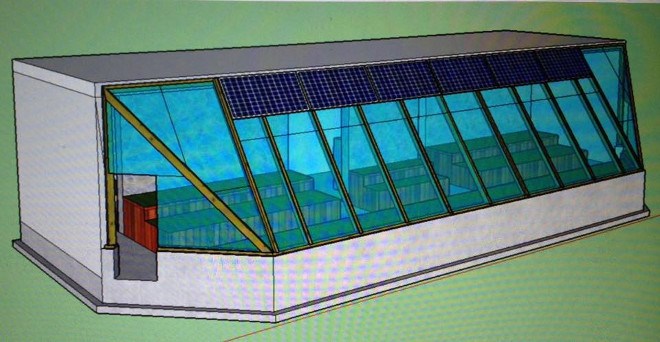A greenhouse project at a high school on Manitoulin Island is being touted as a way for students to learn about agriculture and business acumen, and eventually help the territory be more self-sustaining.
Wikwemikong High School received funding for a teaching greenhouse, which will be built and managed by the students.
Wikwemikong’s Greenhouse for Change was named a winner in the Aviva Community Fund in the Community Resilience category, earning $50,000 toward the venture on Dec. 5.
Jason Thibault, business teacher and vice-principal at the school, said the project is scheduled to break ground in May.
“It's going to be a 30-by-75-foot greenhouse we will build on the bluff on the south end,” he said. “We are working with local contractors, but we have a carpentry program in Grade 11 that will do most of the work.”
He explained there are two carpentry classes, one in Grade 10 and another in Grade 11. The Grade 10 class will help in the fall. They will also be working with Wiki Housing, as their skills could be used with future development.
Once the greenhouse is built, he said it will be an opportunity for the science and biology programs to participate, from business students selling plants grown in the greenhouse to carpentry students making raised beds. They could either sell raised beds to customers, or make more for the benefit of the community as they have done in the past.
The school, Thibault said, is keen on teaching technology and business skills. They have a green industries component to their curriculum, and are hoping to get teachers to implement it and students to participate.
“Currently, we don't have a building to house tech programs, so we are hoping this greenhouse will be a catalyst to help us get one,” Thibault said. “It's a fairly big greenhouse. This is opening up a whole new area in our science and tech programming we couldn't do before. It could open up three or four new programs.”
If those programs come to fruition, he said the current operating budget will cover them, and there is already a high demand for them. One of the mandates of the agricultural department of the First Nation is to create more home-based activities, and this greenhouse will allow them to fulfill that mandate. The vision of the school, Thibault said, would be to have students do core programs in the morning and elective, hands-on programs in the afternoon.
“This is their objective, so now we are able to offer this facility here,” he said. “They have been clearing land, and have been trying to work some agricultural land to get back into farming.”
The greenhouse could potentially help people start their own fruits and vegetables they can grow on their own land, creating a foundation for self-sustainability, as well as teaching the young people of the community to build and improve their community from within.
As a community-based school, he said it's good to know what the community's objectives are so they can match the needs of what they want to accomplish.
Christianna Jones, economic development and apprenticeship coordinator for Wikwemikong Development Commission, said the commission was approached by Focus Forward for Indigenous Youth, a non-profit group that encourages hands-on learning for First Nations youth to put forward a proposal for the greenhouse.
“The told us they have a mandate to build 50 greenhouses or tiny homes on reservations, and we are already building greenhouses, so we partnered for the proposal,” she said. We are trying to encourage students and the community as a whole to pursue jobs in the green industry.”
The project will include 12 to 15 students building the greenhouse, earning co-op credits that will go toward their diplomas.
Jones agrees the greenhouse build will benefit many programs, including trades. Indigenous youth are underrepresented in trades, and with the looming shortage of skilled labour, this could help encourage some to pursue those careers.
“They are not being exposed enough to these opportunities. We want to show them there is a wide variety of jobs they can pursue,” she said.
The project is getting its funding organized and its engineering designs finalized.




